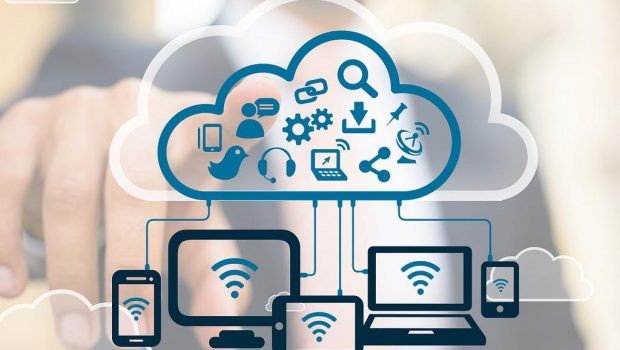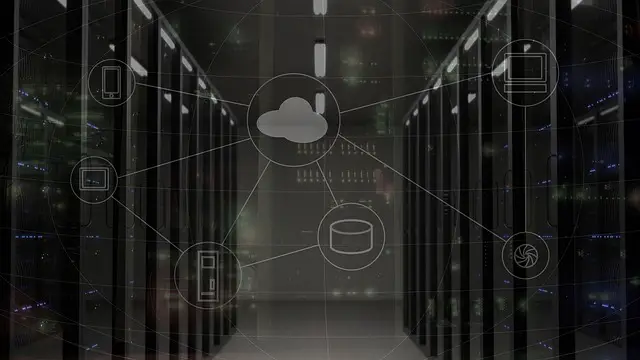
“Cloud computing” is a term that many of us have heard but may not fully comprehend. This is due to the fact that it encompasses a variety of systems and services, making it appear ambiguous or complicated. So today, we're going to explain what is cloud computing with example.
We will provide a basic definition of cloud computing, provide examples of computing, and discuss why businesses use cloud computing.
Cloud computing is the use of off-site systems to assist computers in storing, managing, processing, and/or communicating data.
These remote systems are hosted in the cloud (or the internet) rather than on your computer or other local storage.
They can range from email servers to software programs, data storage, and even increasing the processing capability of your computer.
Interestingly, the concept of Cloud has been around for quite a while, with the idea of pushing services and storage to the cloud touted quite a long time ago by Steve jobs:
“I don’t need a hard disk in my computer if I can get to the server faster… carrying around these non-connected computers is byzantine by comparison.” – Steve Jobs, Late Chairman – Apple
{autotoc}
Cloud Computing With Example
Cloud computing is the use of off-site software or hardware for computing needs that is retrieved via networks.
Examples of cloud computing vary depending on the type of cloud computing services offered.
The three main types of cloud computing are a
- software as a service (SaaS),
- platform as a service (PaaS), and
- infrastructure as a service (IaaS)
- feature as a service (FaaS)
In fact, recently serverless computing, also known as a feature as a service (FaaS), is another popular business cloud computing method.
Software as a Service
SaaS stands for Software as a Service. Rather than installing software on your computer, SaaS allows you to access the platform online. Here are some examples:
- Square, a payment processing company that accepts payments online
- Google Apps like Google Drive and Calendar
- Slack, which allows users to collaborate and chat with one another
- Asana and Monday are project management tools that are hosted completely remotely
Infrastructure as a Service
IaaS is an abbreviation for Infrastructure as a Service. IaaS offers infrastructure resources such as servers, storage, networking, security, and cloud computing. Here are some examples:
- Microsoft Azure, which provides backup and disaster recovery services, as well as hosting and other services.
- Rackspace is a company that provides data, security, and infrastructure services.
- AWS (Amazon Web Services) is surely one of the largest IaaS providers
Platform as a Service
PaaS stands for Platform as a Service. Operating systems, programming language execution environments, databases, and web servers are all provided by PaaS. Here are some cloud computing examples of Paas:
- AWS Elastic Beanstalk which is an orchestration service provided by AWS
- Heroku supports several programming languages that can be executed on their platforms
- OpenShift is a family of containerization software products developed by Red Hat, the company that provides one of the most common versions of Linux
Feature as a Service
FaaS or Feature-as-a-Service is software that focuses on solving a specific problem vs providing more general purpose features. It will usually consist of an open web-based API, most commonly a REST API and/or JS, which is what allows an easy integration into other applications.

Are Physical Servers Used in Cloud Computing Services?
Yes. Cloud computing still necessitates the use of servers; the servers are simply “virtualized.”
This means that rather than running your application, system, or procedures on a single on-site server, they use multiple servers, often in multiple locations, that are connected to each other and your device via secure virtual networks.
This enables the cloud computing service provider to provide services to a large number of people, scale based on client volume, and deliver products and services from anywhere with a connection to the internet.
Why Is Cloud Computing Necessary for Your Business?
Your company is most likely already utilizing a number of cloud computing services. All hosted mail servers, for example, including Gmail and Outlook, are SaaS cloud computing services.
Popular CRMs and automated marketing platforms, such as Salesforce, Hubspot, Mailchimp, and others, are also available.
However, additional examples of cloud computing services for many businesses include:
- VMs (Virtual Machines)
- Storage of Data
- Disaster Recovery & Backup
- Broadening Bandwidth
- Platforms for App Development
- Servers in the Cloud
- Monitoring and management of infrastructure
- Create, Host, and Deploy SaaS Services
What are the Advantages of Cloud Computing?
1. Lowers IT costs
The decrease in IT costs is one of the primary benefits of choosing cloud computing over internally-hosted infrastructure services. This is due to the ability to pay for only how much your company requires in infrastructure at any particular time.
Furthermore, internal computing can be expensive once you consider the heavy costs of purchasing equipment, as well as the costs of housing the equipment and investing IT time to manage and maintain the equipment.
2. Experts in charge
With the rise of cloud computing, fewer and fewer IT professionals are trained in the upkeep of modern servers and other critical infrastructure. Furthermore, because technology is rapidly evolving, best practices and protocols are forever evolving.
When you choose cloud computing, you are entrusting day-to-day management to experts whose primary role requires them to stay up to date on the latest technology.
Furthermore, you are most likely benefiting from a team of experts who manage and maintain your systems, providing you with the benefit of collective knowledge.
3. Protected Environment
Cloud computing is also usually associated with more secure computing. While being on the surface, in-house computing appears to leave less room for network breaches, it also increases the possibility of error.
Your data is contained in a single location rather than multiple locations when you use in-house computing. This means that data and systems are more probable to be permanently lost in the event of a natural disaster or theft. It also implies a reduction in monitoring, updating, and management.
Not only are your information, infrastructure, and services more likely to be spread across various locations in cloud computing, but they also go through rigorous updates, compliance modifications, and security protocols. Furthermore, a cloud computing company typically provides round-the-clock surveillance to prevent and resolve issues more tirelessly than an on-site team.
What is the significance of the name Cloud?
In network engineering, the term "Cloud" refers to a network design that represents the placement of numerous network devices and their interconnection. The contour of this network design resembled that of an ominous cloud.
Types of Cloud Services
There are four different cloud models to which you can subscribe based on your company's specific requirements. In the following list, you will find the various types of clouds:
- Private Cloud: In this type of cloud, computing resources are only available to a single enterprise. This strategy is more commonly utilized for intra-company communications. When computing resources may be regulated, owned, and operated by the same entity, this is referred to as colocation.
- Community Cloud: Computing resources are made available to a community and organizations using the Community Cloud model.
- Public Cloud: When it comes to B2C (Business to Consumer) interactions, this sort of cloud is most commonly used. In this case, the computing resource is owned, governed, and operated by the government, an academic institution, or a commercial enterprise.
- Hybrid Cloud: is a sort of cloud that may be used for both B2B (Business to Business) and B2C (Business to Consumer) interactions (Business to Consumer). This type of cloud deployment is referred to as hybrid cloud since the computing resources are linked together via multiple clouds.
Now that we've seen what is cloud computing with example, are there are any questions which you have? We'd be happy to answer your questions below.
